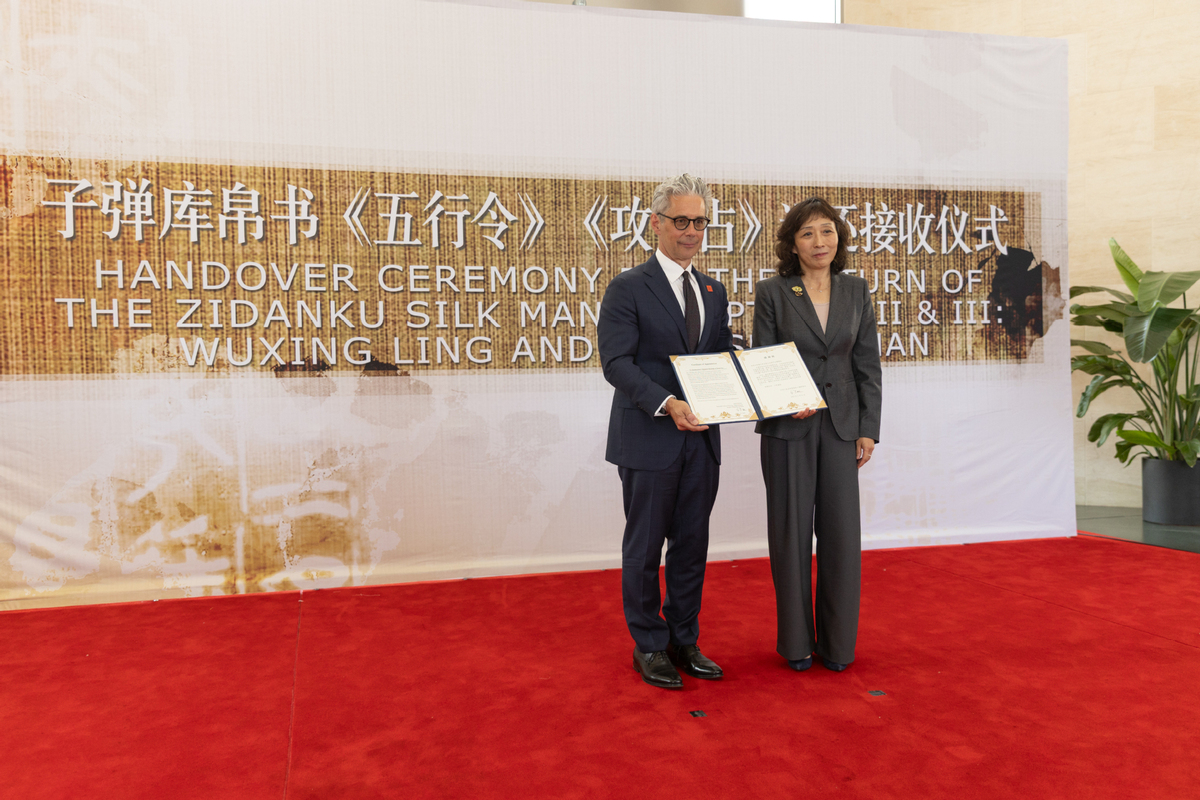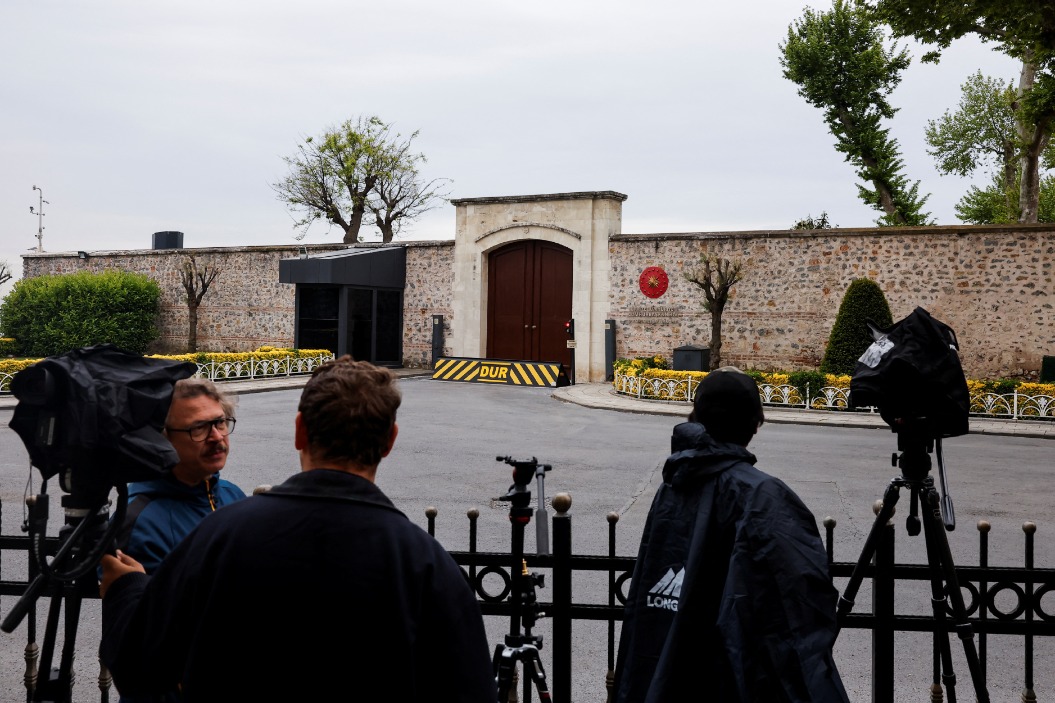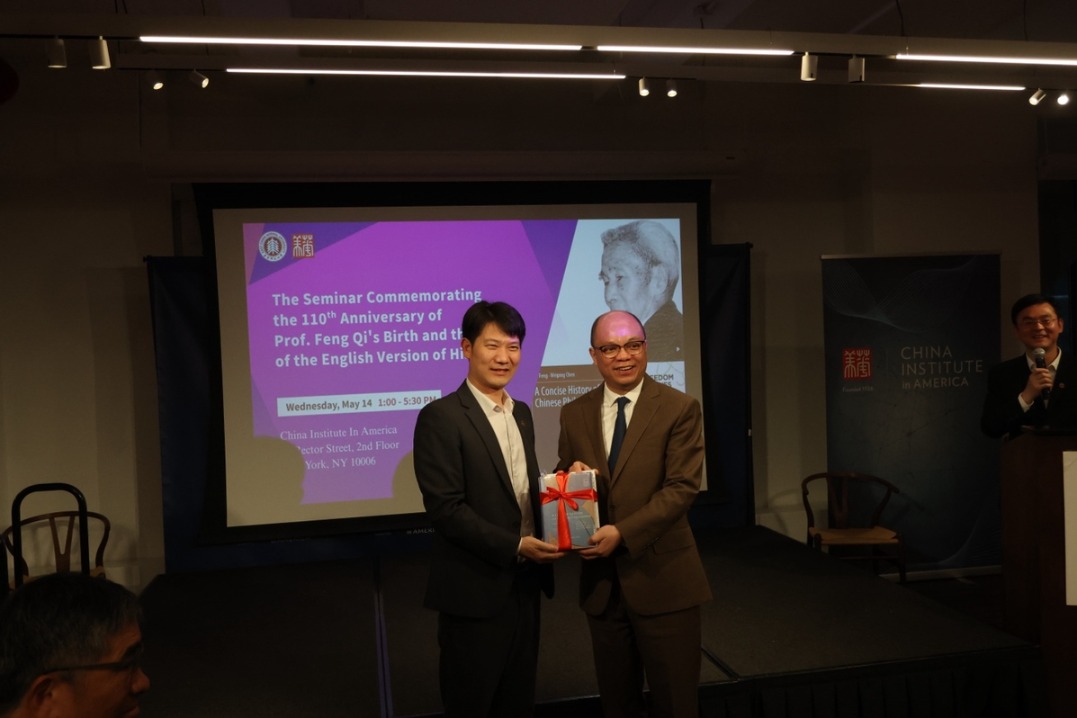US museum returns to China ancient silk manuscripts from Warring States period


WASHINGTON -- The Smithsonian's National Museum of Asian Art on Friday officially returned the Zidanku Silk Manuscript volumes II and III: Wuxing Ling and Gongshou Zhan from the Warring States period to China's National Cultural Heritage Administration.
The handover ceremony took place at the Chinese Embassy in the United States in Washington, D.C.
The silk manuscripts were unearthed in 1942 from the Zidanku site in Changsha, Hunan Province, and were illegally taken to the United States in 1946. The silk manuscripts are currently the only known silk manuscripts from the Warring States period (475-221 BC).
The Zidanku Silk Manuscripts are divided into three volumes. The returning texts, Wuxing Ling and Gongshou Zhan, are the second and third volumes, respectively.
As the only known silk manuscripts from the Warring States period unearthed in China, the Zidanku Silk Manuscripts -- over 2,000 years old -- are the earliest silk text discovered to date, representing the earliest known example of a classical Chinese book in the true sense. It is of foundational significance for the study of ancient Chinese script and literature, as well as for the history of Chinese scholarship and thought.
The repatriation of Wuxing Ling and Gongshou Zhan "ensures that these invaluable artifacts can now be fully and rightfully protected and studied in the soil from which they came," Vice Minister of Culture and Tourism Rao Quan, who is also the head of the National Cultural Heritage Administration, said in a video address.
This will allow for a more accurate and comprehensive understanding and interpretation of their heritage value, transforming them into shared academic and civilizational assets for China and the world, said Rao.
At the handover ceremony, Chinese Ambassador to the United States Xie Feng said that the return is a "cultural milestone" and a "testament" to China-U.S. cooperation in heritage preservation, bringing new vitality to people-to-people exchanges and friendship.
China and the United States have made "notable progress" in heritage cooperation, with around 600 artifacts sent back to China -- including more than 40 pieces since the start of this year, according to the Chinese ambassador.
At the ceremony, Chase F. Robinson, director of the Smithsonian's National Museum of Asian Art, said that the return of the manuscripts "reflects a carefully considered decision," calling it an example of "mutually beneficial and collegial international collaboration."
The return of Wuxing Ling and Gongshou Zhan marks a successful case of proactive recovery of significant lost cultural artifacts. It also serves as a model for the application of the core spirit of dialogue and cooperation outlined in the Qingdao Recommendations, showcasing how research into provenance and transfer history can support the successful repatriation of Chinese cultural artifacts lost overseas.
These manuscripts will be publicly displayed for the first time in July 2025 at the National Museum of China as part of an exhibition on the repatriation of cultural relics.
The National Cultural Heritage Administration said it will continue to work toward the early return of Sishi Ling, another volume of the Zidanku silk manuscripts.
































